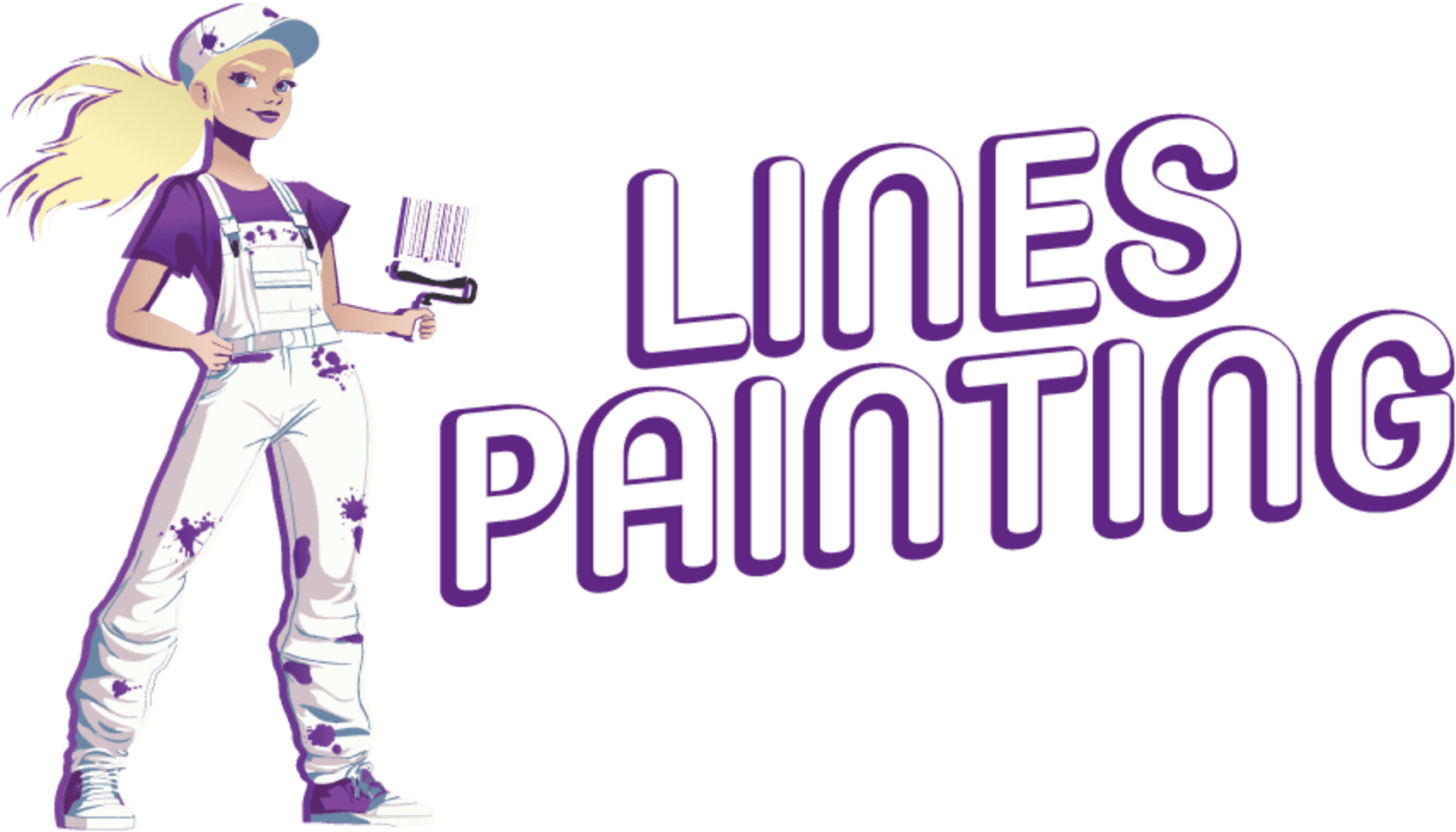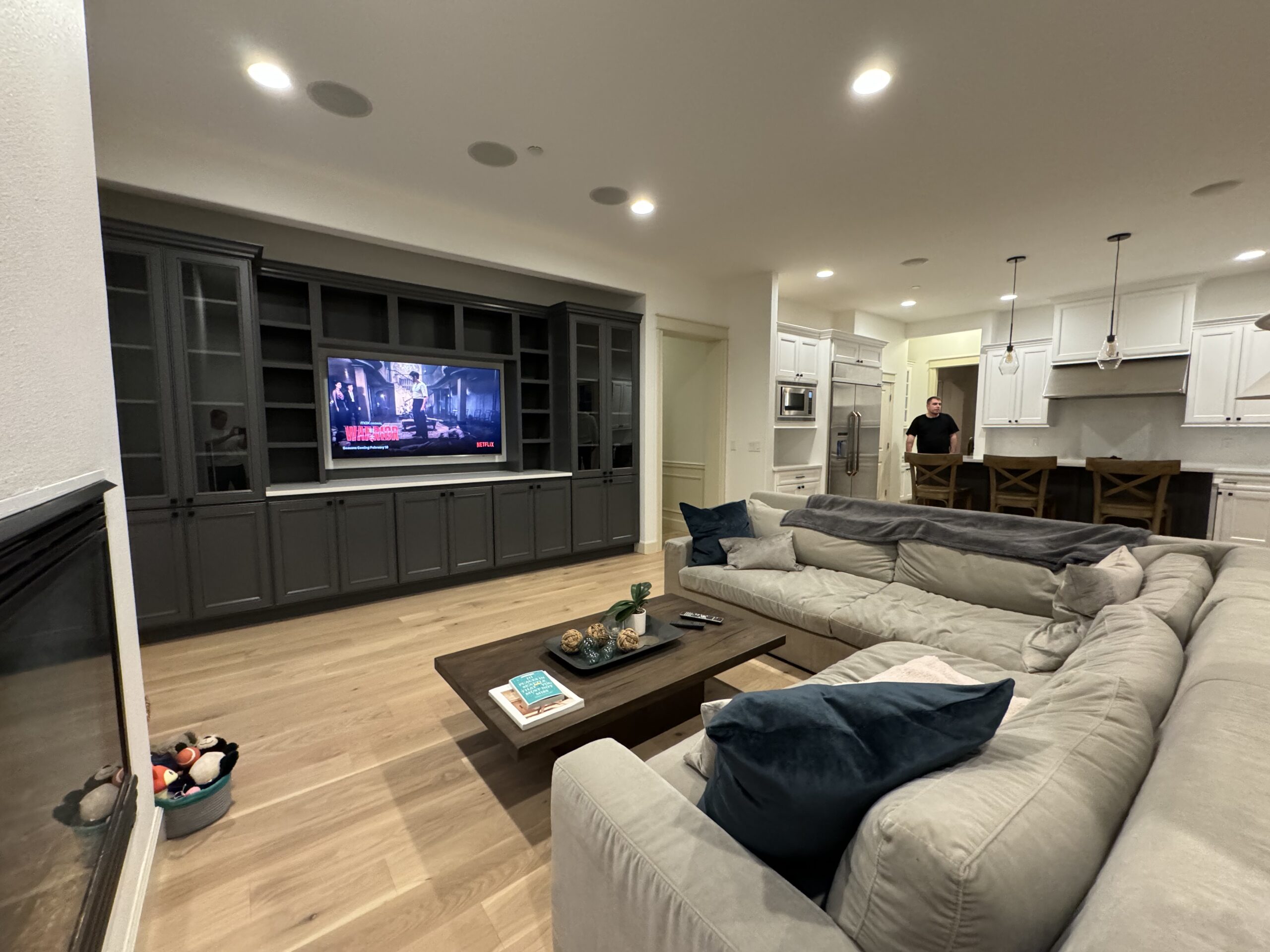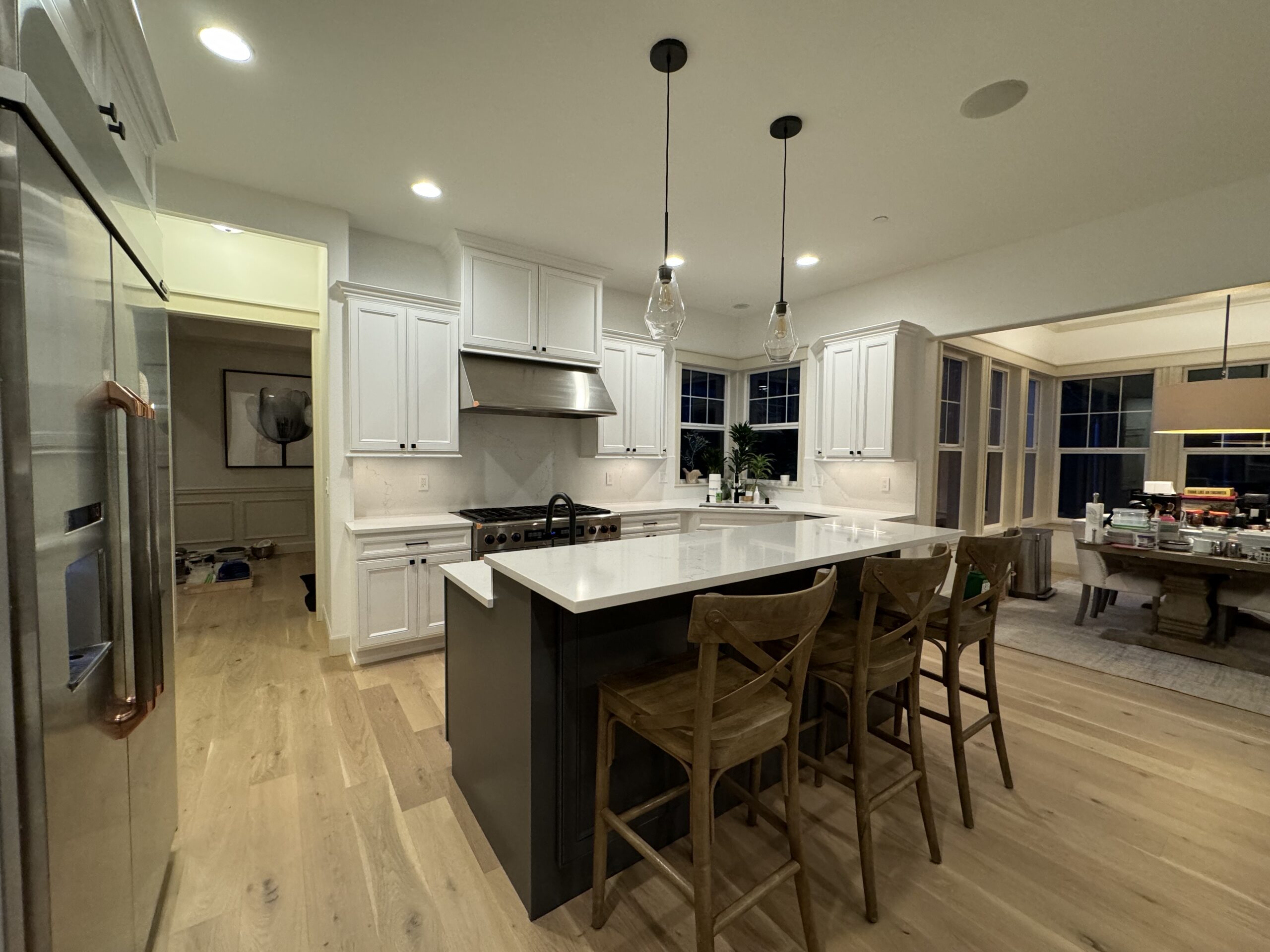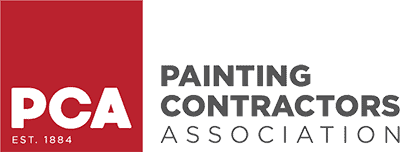If you’ve ever found yourself with leftover exterior paint, you might have wondered, “Can I use exterior paint inside?” It seems like a great way to save money and avoid waste, but the reality is that exterior paint is not meant for indoor spaces. When tackling interior house painting in Edmonds, WA, choosing the right paint makes all the difference.
As a house painter, I’ve had my fair share of clients ask about using exterior paint inside. One homeowner wanted to use leftover exterior paint in a bathroom remodel. They figured it would hold up well to moisture, but they quickly learned it wasn’t the right choice. The strong smell lingered for weeks, and the finish never quite cured properly.
If you’re thinking about using exterior paint indoors, here’s why it’s not the best idea—and what to do instead.
Key Takeaways
Can I Use Exterior Paint Inside? Here’s Why You Should Think Twice
1. Exterior Paint Has Higher VOCs, Which Affect Indoor Air Quality
Exterior paints are formulated to withstand the elements. This means they contain stronger chemicals and higher levels of volatile organic compounds (VOCs). When used outside, these VOCs dissipate quickly. But indoors, they linger in the air, creating a strong smell and potentially causing health issues.
Breathing in these chemicals for an extended period can lead to headaches, dizziness, and respiratory issues, especially for children, older adults, and pets. If you’re planning an interior house painting project, using the right type of paint is important for keeping your home’s air safe.
2. Exterior Paint Dries Differently Indoors
One major problem with using exterior paint inside is that it dries and cures differently compared to interior paint. Exterior paint is designed to dry under sunlight and fresh air, which helps it cure properly. But inside, where ventilation is limited, it may take much longer to dry—if it ever fully cures at all.
This can lead to sticky walls, streaky finishes, and an overall uneven application. A client once tried to use an exterior satin finish in their living room, thinking it would provide a durable surface. Instead, the walls remained tacky for weeks, and dust and pet hair stuck to them like glue. Interior house painting products are specifically designed to cure properly indoors, ensuring a smooth and durable finish.
3. It Won’t Hold Up to Everyday Wear and Tear
Many people assume exterior paint is more durable because it’s made to handle rain, snow, and direct sunlight. But indoor durability is a completely different challenge. Interior paint is formulated to resist scuffs, stains, and daily cleaning, whereas exterior paint is built to expand and contract with temperature changes.
In high-traffic areas, exterior paint tends to chip, peel, or become scratched more easily. If you have kids or pets, you’ll notice the wear and tear much faster. Choosing the right paint for interior house painting ensures that your walls stay looking fresh and clean for years to come.
4. The Finish and Appearance May Look Off
Exterior paints often have a different texture and sheen compared to interior products. Even if you use the same color, you might find that the finish looks uneven or reacts strangely to indoor lighting.
A friend of mine once used an exterior semi-gloss on their kitchen cabinets, thinking it would be extra durable. Instead, it turned out too shiny and had a slightly rubbery feel. They had to sand everything down and repaint using the proper interior house painting products, wasting time and money.
For house painting projects, always choose paints made for indoor surfaces. They’re designed to reflect light naturally and complement the textures of your home’s interior.
5. It Can Lead to Moisture Problems and Mold Growth
Exterior paint is formulated to trap moisture and prevent rain from soaking into outdoor surfaces. While this is great for siding, it’s a disaster when applied indoors, especially in bathrooms, basements, or kitchens.
When moisture gets trapped under the paint, it can lead to mold and mildew growth, peeling, and even damage to drywall. If you want to avoid costly repairs down the road, stick with high-quality interior house painting products that allow for proper breathability.
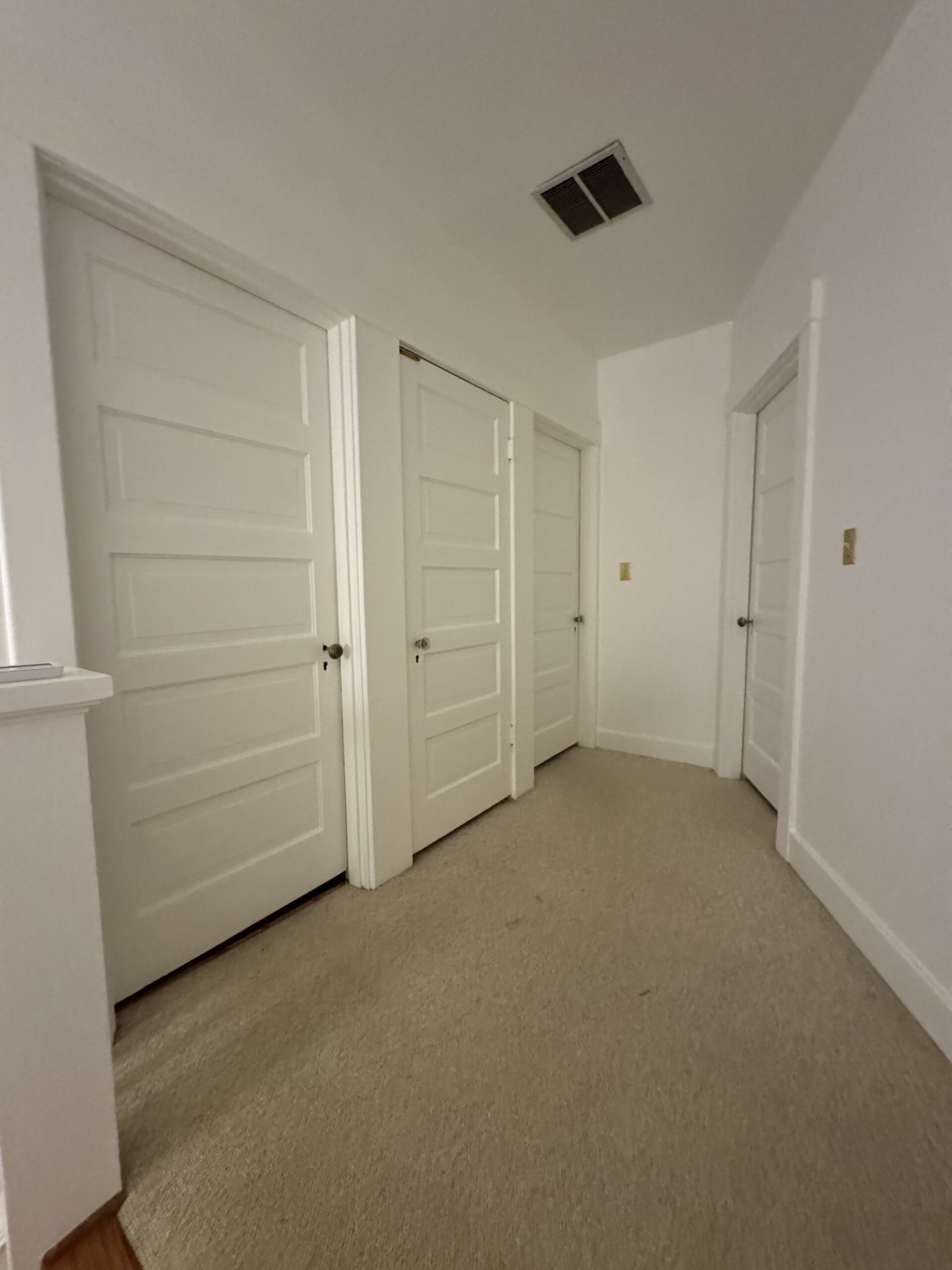
What Should You Use Instead?
If you’re planning an interior house painting project, here’s what works best:
Get Professional Help for Your Interior House Painting in Edmonds, WA
If you’re serious about achieving a professional, long-lasting paint job, it’s worth calling in the experts. At Lines Painting, we’ve handled countless interior house painting projects and have seen firsthand what happens when the wrong paint is used. Our team will guide you in choosing the right products, colors, and finishes so your home looks amazing and stays that way.
Need help with your next interior house painting project? We proudly serve Edmonds, Seattle, Bellevue, Kirkland, WA, and the surrounding areas. Give us a call at (425) 434-8887 for a FREE estimate. Let’s make your home look its best with the right paint for the job!
